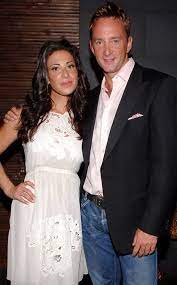
This month I did two author reads, and I have one scheduled for early next month. As Comeuppance Served Cold draws closer to publication, I plan (or at least hope) to do more personal author readings. This leads to the inevitable question… what do you read?
Some of the big questions are answered by the event itself and the venue. If your reading time is 20 minutes you’ll read something different than if you have 2 minutes. If it’s a promotional event for your work, and a solo author event, you are probably going to read from the work you’re promoting. (One very well-known exception in the SF field is John Scalzi, and I’ll discuss that more below.)
Sometimes the host has some explicit requirement. Story Hour, for instance, wants a complete piece. This no doubt perfectly fits their brand. They also don’t want their authors going over 20 minutes, because their experience, especially online, is that audiences tend to start zoning out after that long. Online, you are competing with the refrigerator, the cat, the kids, or what’s happening outside the window… you don’t want to help your audience drift away.

For Story Hour I read two discrete, fairly short pieces, and that seemed to work well.
(John Scalzi often reads very little from the work he is promoting. He says that people have read reviews and highlights and probably already read the book by the time he’s touring. He wants his live audiences to hear something not everyone else has. Sometimes he reads from a WIP, sometimes from blog posts or articles. John Scalzi is a several-million seller with a backlist and a track record, and this technique works for him. Our mileage may vary.)
Earlier this week I had an opportunity to participate in FOGCon’s Authors Read event. I like how FOGCon has set these events up. They blend invited authors, who each read for 20 minutes with a brief Q&A after, with several Open Mike readers. We signed up for our 5-minute Open Mike slot. This program works extremely well, for me anyway, particularly as an audience member.
This week I paid attention to what the Open Mike people chose to read.
Among the Open Mike readers, one reader won a private award from me for Best Use of Time. She read a short piece of flash fiction, I’m guessing no more than 500 words, which left her time to share four short science fiction poems. She shared genres, she let us see a range of her work, and she didn’t run over. I award the chef’s kiss of 5-minute readings.
We heard the beginning of a retelling of a fairy tale. There was no way the story was going to be finished in five minutes–the author read to a suspenseful stopping place. It worked well, satisfying me but making me want to hear/read the whole thing.
One reader read a transitional passage. While the prose was good, and the transition gave the first-person narrator a chance to fill in some backstory (this is book four or five of a series) I thought it was a risky choice. Much of the passage was simple a description of the landscape the characters drove through. So, risky, yes, but a good choice if you want to showcase your prose.
Another read a set-piece from deeper into her book. Because it was a set-piece and addressed the key premise of her story–ghosts, and who can/cannot see them–this section worked well. What I took away from her reading is that a piece from the middle of a book can work perfectly… if it’s the right piece.
And this gets me into the deeper level of “what do I read?” questions.
I had five minutes. I wanted to read from Comeuppance. This was actually the book’s “reading” debut. I wanted to intrigue. I wanted people to want more.
The book has at least one set piece that I think is funny, with great dialogue, and you don’t have to know what’s going on to appreciate what’s happening. It was too long to read completely, it is dialogue-heavy, and there’s no magic in it. The opening chapter is dialogue-heavy too, but there is at least a discussion of magic. (More about dialogue in a minute.) And, it’s the beginning of the book, right after a shorter prologue, so it better be intriguing! That’s what I chose.
Do you choose narrative, action or dialogue to read? My work relies heavily on dialogue, so I’m going to have trouble avoiding it.
If you choose dialogue, do you use voices? I’m trying to use voices, which I’m sure is very entertaining… if not in the way I’d wish. I tried to deepen the register for the male voice in the section I read, which got me a scratchy throat at the end, but I don’t know how much else.
Of course the ideal is a blend. Some of your deep, or snappy, dialogue, some lyrical phrases (or tough-as-mails prose) and some activity from the characters.
Beginning, or middle of the book? Do people have to know too much to understand a section from the middle? I have another great section from Comeuppance that is practically a standalone–but it gives away a crucial detail, so I don’t read it.
More than one section? I’ve seen plenty of writers do this at authors events, and I yearn for the day when this is my problem to have. I’m leaning toward, “Yes, why not? A couple of different sections,” to give a bit more flavor.
When you’re in the audience, what keeps your attention? What readings have you liked best? Is there an author who surprised you, or entertained in an unexpected way? I’d love to hear about them.
